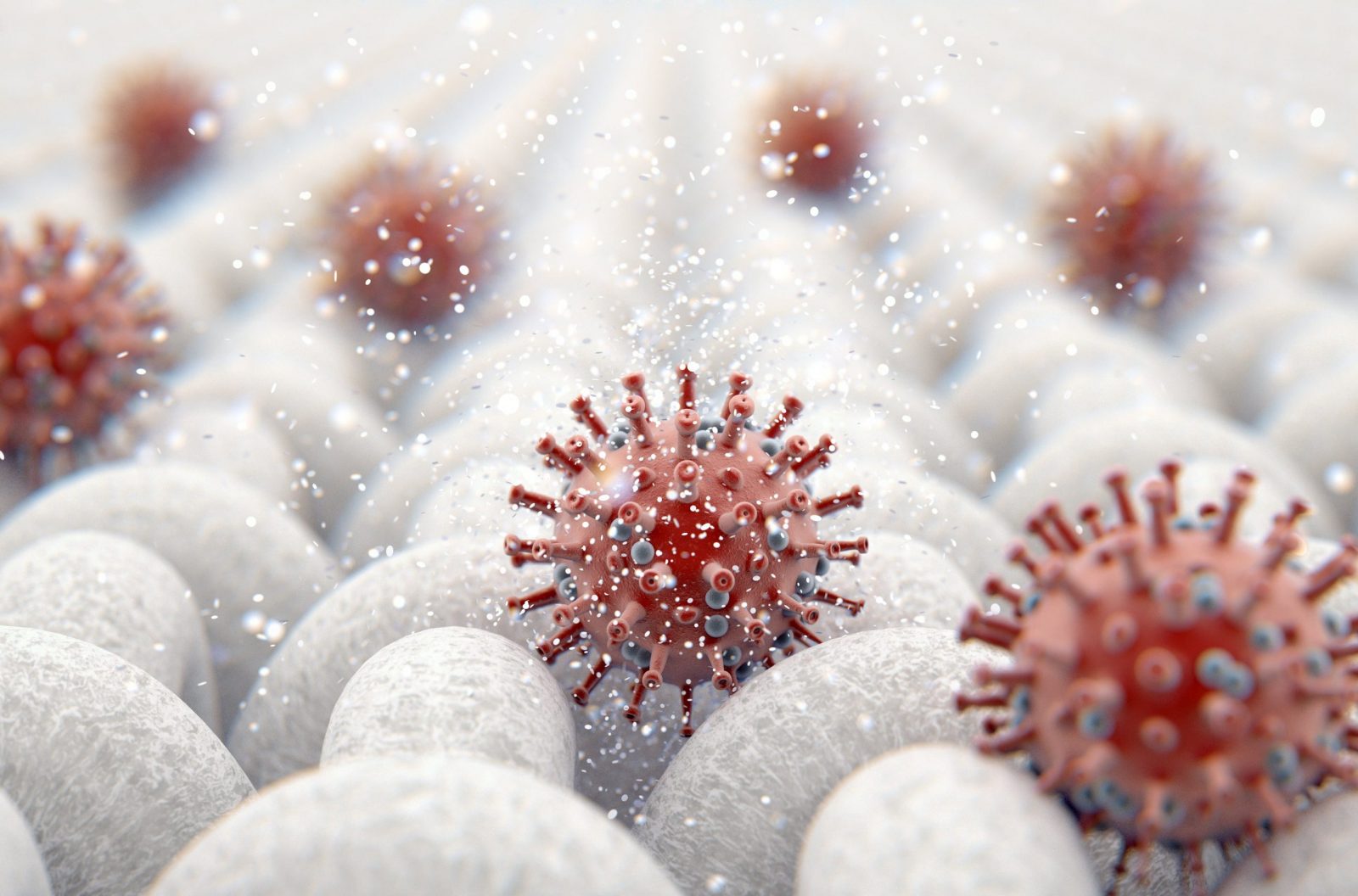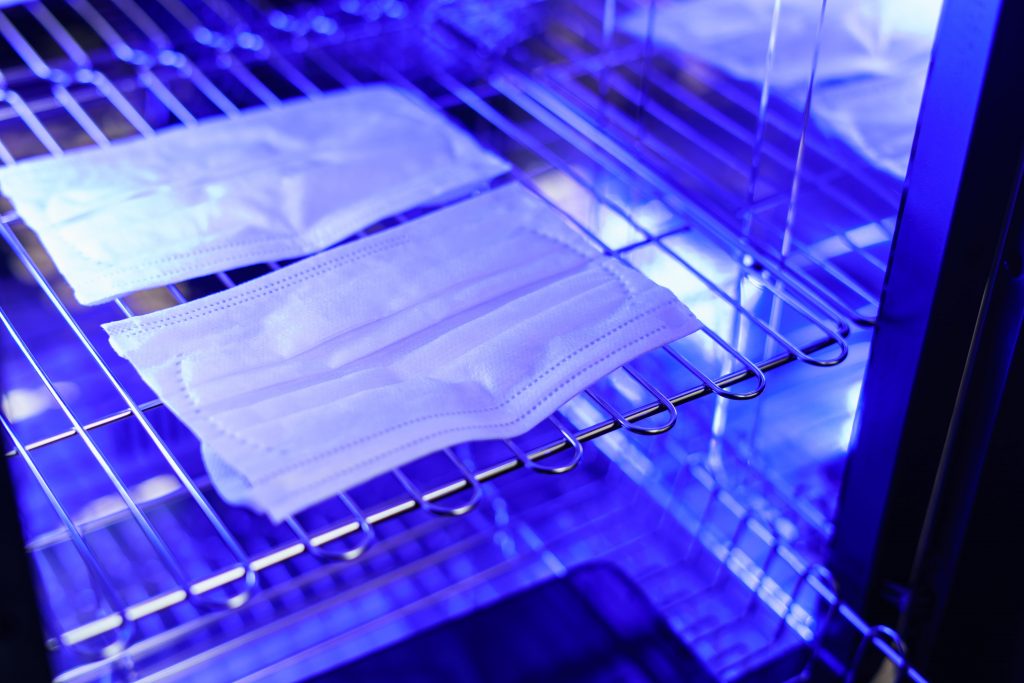
Welcome back to the 2nd edition of the Inivos Academic Digest for 2021, where our team shares the most interesting and thought-provoking research across microbiology, personal protective equipment (PPE) and infection prevention and control.
Over February, there has been a significant decline in the number of research papers on PPE and disinfection technologies. More research is being focused on the stability and persistence of SARS-CoV-2 in different environments, especially in waste-water, and the possibility of its transmission through the faecal-oral route. Papers were published in the Journal of Nature Reviews Gastroenterology and Hepatology, Environmental Letters and Cytokine and Growth Factor Review.
The next challenge will be evaluating the efficacy of UV-C light and other interventions for PPE decontamination and the inactivation of SARS-CoV-2 and other harmful pathogens. Papers were published in Pharmaceutics, American Journal of Infection Control, and Antimicrobial Resistance and Infection Control Journal.
SARS-CoV-2 stability, infectivity and persistence
One research paper in the Nature Reviews Gastroenterology & Hepatology1 journal explored the literature to find evidence that SARS-CoV-2 can be transmitted through the faecal-oral route. Many of the studies they found reported strong evidence on the presence SARS-CoV-2 RNA in stool samples emphasising the possibility of SARS-CoV-2 associated intestinal infection. This could be as a result of altered composition of the gut microbiota, which is correlated with the elevated expression of inflammatory cytokines such as IL-2, IL-6, and IL-18. Furthermore, faecal calprotectin was found to accumulate in high levels in the stools of patients with COVID-19 with diarrhoea, which was also correlated with serum levels of the inflammatory cytokine IL-6. Authors concluded that these lines of evidence highlight the nature of SARS-CoV-2 gastrointestinal infection and its potential faecal–oral transmission but more studies are needed to investigate this matter further.
Correspondingly, another review in Environmental Letters2 journal provided more evidence on the presence of SARS-CoV-2 in different samples and on different reservoirs. SARS-CoV-2 was detected in respiratory samples, saliva, blood, faeces and rarely from urine. SARS-CoV-2 was also detected from stool and serum in a significant fraction of patients. The median duration of viral shedding in the stool samples was significantly longer than from respiratory and serum samples; 22 days in stool, 18 days in respiratory, and 16 days in serum. In addition, SARS-CoV-2 stability on surfaces was also evaluated and found that it can remain infective on plastic and stainless steel for up to 3 days but only for 4 hours on copper surfaces.
One paper in the Journal of Korean Medical Science3 provided insights into the progress of COVID-19 vaccination programmes. As of January 2021, 68 vaccines are being tested in clinical trials, 2 have been approved, 20 are in phase 3 and 24 are in phase 2 clinical trials. With Pfizer and Moderna (mRNA platform) being the most efficient at an efficacy rate of 95% and 94.1% respectively. In addition, AstraZeneca and Johnson & Johnson vaccines (adenoviral vector platform) showed efficacy rate of 70.4% and 66% respectively. Whilst NovaVax vaccine (protein subunit platform) showed 89% efficacy.
One review in the Cytokine and Growth Factor Review4 journal investigated the possibility of SARS-CoV-2 infection to facilitate neuronal injury and neurological changes. A meta-analysis of the most common neurologic manifestations of COVID 19 reported fatigue in 32%, myalgias in 16% and headache in 9.2% of patients. In addition, a French study reported neurologic symptoms in 49 of 58 patients with COVID-19. Taken together, there is clear evidence that neurological symptoms of COVID-19 are common and potentially profound. However, the pathogenesis behind this is still not fully understood and can be as a result of viral interactions with ACE2 receptors on neurons.

PPE decontamination
One observational study in the American Journal of Infection Control5 investigated the microbial contamination of powered air purifying respirators (PAPR) used by healthcare staff during the COVID-19 pandemic. 25 PAPR hoods were swabbed; ten (40%) returned positive results. Bacterial growth was detected on six PAPR; five of the PAPR tested positive for fungal growth; all tested negative for SARS-CoV-2 and common respiratory viruses. The researchers concluded that bacteria and fungi can remain on internal components of PAPR hoods and air supply hoses despite following recommended disinfection procedures.
A research paper in the journal of HardwareX6 evaluated a portable device with UV-C lamps in irradiating N95 masks. The equipment uses three 30 Watt discharge tubes emitting UV-C light at a 253 nm wavelength. After 15 min of UV exposure, irradiance of 2-4 mw/cm2 and a dosage of 2 J/cm2, infective virus particles could not be recovered from any of the face masks inoculated with 5 log10 TCID50 compared to 4.2log10 recovered from untreated masks. The researchers stated that the device created was able to disinfect N95 masks descending the human respiratory syncytial virus (hRSV) viral load, a surrogate virus of the SARS-CoV-2 virus, used for its biological validation.
One study in The Journal of Hospital Infection7 evaluated hydrogen peroxide and ozone residue levels on N95 masks following decontamination. After decontamination, hydrogen peroxide and ozone were detectable in the gas phase in the vicinity of masks even after five hours (h) of aeration. However, with appropriate aeration, the gaseous residue levels in the vicinity of the masks decreased to permissible levels. The reliable assays to monitor these residues are crucial to ensure the safety of the mask users.
UV-C light & HPV efficacy
A systematic review in the Antimicrobial Resistance and Infection Control8 journal evaluated published studies that describe the effect of HPV and UV-C automated technologies on HAI rates. Of 43 studies, 20 (47%) used hydrogen peroxide (14 for outbreaks) and 23 (53%) used UV technology (none for outbreaks). The most popular pathogen targeted, either alone or in combination with others, was Clostridium difficile (27 of 43 studies: 63%), followed by methicillin-resistant Staphylococcus aureus (MRSA) (16 of 43: 37%).
One experimental study in the Journal of Pharmaceutics9 investigated the antimicrobial activity of multiscale metal oxide (MO) particles coupled with UV germicidal irradiation on Escherichia coli and M13 bacteriophage. MO particles themselves showed antibacterial activity against E. coli, which was the highest among the ZnO particles. However, no viral inactivation by MO particles occurred in phage. Under dual UV irradiation, multiscale zinc oxide and cupric oxide particles had superior antimicrobial activities against E. coli and phage. The results showed that the dual UV-multiscale MO particle hybrids exhibit enhanced antibiotic potentials.




